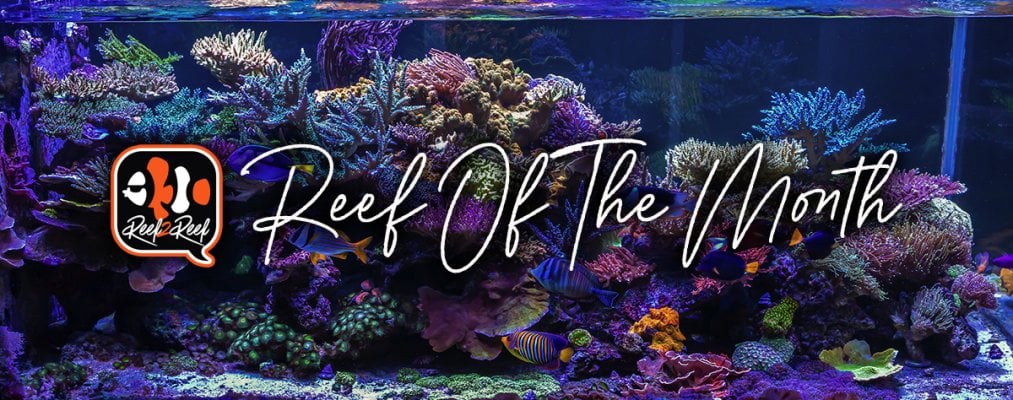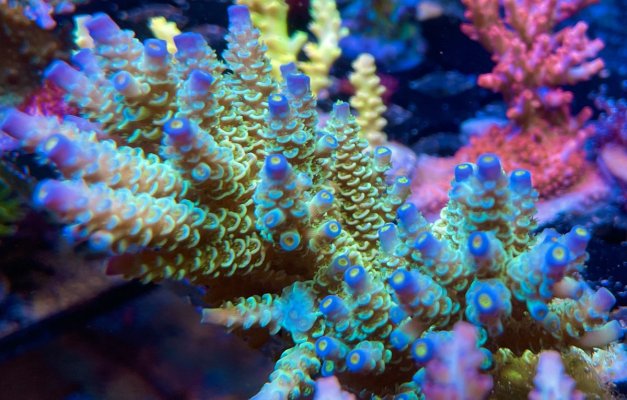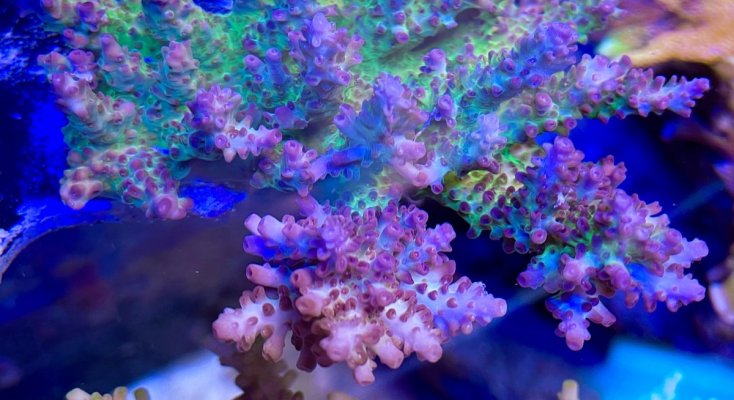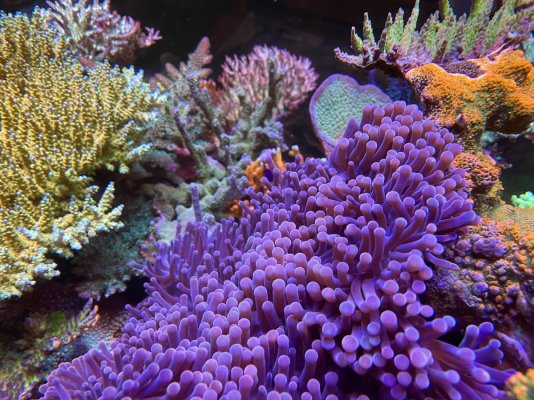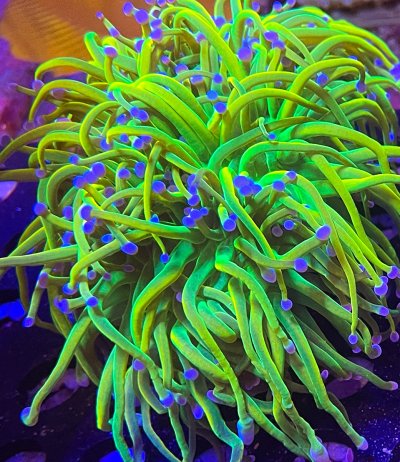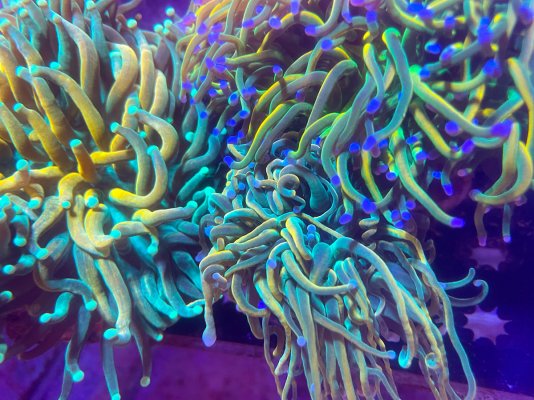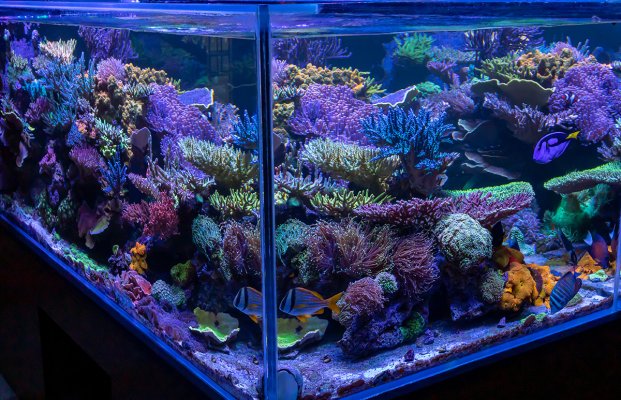Introduction
I was humbled when I got the notification that my system was chosen as Reef Tank of the Month. What an honor it is to be added to this group of incredible tanks that have preceded mine here. My name is Brad Blankenship (@MantisReef here on Reef2reef), and I have been a reef keeper for over 30 years. I have always been fascinated with the ocean and the wonderful creatures that call it home. Since an early age, my dream was to travel the world and scuba dive. I wanted to go to all the cool places I would see in my favorite Jacques Cousteau documentaries. Reality, I was a 20 something with very limited resources. I was, however, able to start my first very modest reef tank in 1991.
Now you need to understand this was before our widespread access to the vast amount of good sources of information about reef keeping, like Reef2reef, that we enjoy today. I was lucky to discover “The Marine Aquarium Reference” written by the aquaculture legend Martin A. Moe, Jr. This book shaped my early understanding of keeping saltwater aquaria and gave me a solid foundation of knowledge. I am fairly certain, if I had not found this book, I would not still be keeping a reef aquarium today.
By 1995, I had a 90-gallon acrylic corner tank, running pure Berlin method with a single Iwasaki 6500K halide for lighting and lots of Kalk powder. It would destroy a poor MaxiJet I had running as a top-off pump every 6 months or so, but the tank was successful. Here is a photo of my tank at the time (see below). About a year after this photo was taken, this tank would crash during a lightning storm. The storm tripped the ground fault that powered the tank while we were not home. Ironically, my wife and I had traveled to the Florida Keys to become scuba divers for the very first time.
Photo of Old 90g Tank
Current tank getting set up
System Profile
My current display tank is a custom made 400-gallon peninsula tank made of 3/4” low iron glass. Viewable on 3 sides, dimensions are 80”x40”x30” with no center bracing that could potentially block light from entering the tank. Euro bracing runs down both of the long sides. I have had this tank a little over 15 years, and the aquascape was established in its current state around ten years ago.
Photo of left side

Photo of right side

Front view

Photo of right side
Front view
This tank has a piece of Starboard that covers the bottom instead of sand. I like how corals can grow to cover and encrust the bottom. Experience has made me a firm believer that bare bottom is the best way to run a reef tank for long term success. Over the years, I have tried various thicknesses of sand beds. For me, every single time, around the 5 year mark of any sand bed; nutrients, caused by the accumulation of detritus, will become an issue causing unwanted algae in the tank. With a bare bottom tank, whenever detritus accumulates, you simply siphon it out. This current tank setup has been running for over 15 years, with no excessive nutrient issues whatsoever.
Water flow is provided by 4 large propellor pumps that are hidden away behind a smoked glass partition on the non-viewable end of the tank. Water gets pushed from that smoked glass partition to the other end of the tank by a random combination of pumps as they cycle on and off throughout the day. The water then returns over the top of the reef crest in a large gyre wave pattern, until it reaches the overflow located in the center of the partition. The goal of this setup was to provide flow throughout the tank with no plumbing visible on the 3 viewing sides of the peninsula. This is the most unique aspect this tank.
Target Water Parameters:
- Temp: 77-78 F.
- Salinity: 1.026
- pH: 7.7-8.2
- Alk: 9.0-9.4 dKh
- Cal: 440-450 ppm
- Mag: 1350 ppm
- PO4: .03-.05
- NO3: 0-1 ppm
Filtration and Maintenance Routine
The system's total water volume is 600 gallons, this includes a large Rubbermaid sump, 3 small frag tanks, and my old 90 gallon corner tank that are all plumbed together in the basement below the display. All the water that flows downstairs passes directly through a large 5’ tall custom protein skimmer that my friend George (GEO) made for me many years ago before he retired. This skimmer only runs for 12 hours at night and is the only piece of artificial “filtration” equipment that I use.
Frags being grown out



Most of the filtration for this tank is handled naturally by the countless pounds of true Live Rock that are in the display, sump, and 90-gallon tank. Some of this rock I have had for over 30 years, and my collection includes rock from the Caribbean, Tonga, Fiji, Florida Gulf Coast and Bali. I know the trend now has moved to the use of mostly Dry Rock out of necessity and the fear of pest introduction, but I’m a firm believer that natural processors are best. The amount of beneficial marine bacteria, sponges, and other important filtering organisms in my rock are impossible to replicate by other means.
All freshwater passes through my RO system before use, and Red Sea salt mix is my salt of choice. I do small water changes as needed to replace lost saltwater, and 2-3 large 150 gallon water changes per year.
Stable alkalinity is vital to sustained success. I monitor the alkalinity of the tank with an Alkatronic auto tester that sends a text message to my phone 3 times a day. These automated alkalinity water testers are a real gamechanger, and maintaining my reef is so much easier these days due to this single addition.
I use CO2 scrubbing media in a reactor that is hooked to the air intake of my skimmer. This raises the overall ph of the water which increases alkalinity and calcium uptake in my corals, translation, it makes my corals grow FASTER.
The major dosing requirements for this tank are controlled by my Neptune Apex controller. I have had this system for many years, and I like the easy customization that the Apex allows. Calcium and alkalinity requirements are managed by a combination of methods due to the very high demand of this system. A large 8" GEO calcium reactor runs continuously, and ESV Bionic 2-part is dosed to keep up with the additional demand of my corals. I use the Alkatronic as a monitor only, and if an adjustment is needed I simply adjust the 2-part dosage as required to keep the system within my target range.
My system has a tendency to naturally run low in nitrate and phosphate, probably due to a combination of my very large custom 5' tall, 16” diameter protein skimmer, the fact that there is no sand to trap detritus with the bare bottom tank methodology, and the large amount of natural Live Rock. Due to my very low nutrient levels, this tank rarely has unwanted algae issues. For coral health, I compensate for the naturally low nutrient levels by dosing Reed Mariculture Oyster Feast and Two Little Fishies Acropower amino acids daily. I also like to feed my fish and corals heavily with a homemade seafood blend. A couple of drops of Lugol's Iodine and Brightwell Aquatics Replenish, a trace element supplement, are added weekly.
Lighting
For lighting, I use 5 Orphek Icon lights that I hang from a custom rack made of 80/20 Aluminum rail. When this tank was first started, I used 3 400 watt metal halides. As the LED trend started to take hold in the hobby, I took a cautious wait and see approach. I’m so pleased I did, as my eventual transition to Orphek LED lighting was seamless and easy. I originally went with the Atlantic V4 and upgraded to the Orphek Icon when the kits came out last year. I really like how Orphek allows me to upgrade as new versions of their lights come out, and the growth and color of my corals is better than it has been with any other light combination I have ever tried in my 30 years of reef keeping.
Downstairs on the frag tanks, I’m using several Orphek OR3 bars, Blue Plus and Sky Blue variety with t5 light supplementation.
Fish Inhabitants
- Red Sea Regal Angelfish
- Blue Hippo Tang
- Red Sea Sailfin Tang
- White Tail Bristletooth Tang
- 2-Purple Tangs
- Hawkfish
- Royal Gramma
- Chalk Basslet
- Mystery Wrasse
- Magnificent Foxface
- Breeding Ocellaris Clownfish Pair
- Porkfish
Coral Inhabitants
- The tank is predominately Acropora species - Over 50 different colonies.
- Lots of Euphyllia, Torches, and Hammers as these are my favorite LPS
- Aussie Elegance Coral
- Several Goniopora
- Mushrooms: Jawbreakers, Bounce, etc.
- Purple Magnificent Anemone, right in center of the display
Frag tanks downstairs are filled with other Acropora frags currently in different stages of grow out.
Final Thoughts
Even though I have continuously kept a reef tank for over half of my life, I’m still passionate about this hobby. For me, it’s the perfect blend of Art and Science. It’s challenging at times, but because of that challenge, reef keeping can be so rewarding when successful. It’s impossible to get bored when there is always something new to try, something new to learn, or a new skill to pick up. I also like how my goals in this hobby have evolved over time. At first, I simply wanted to keep my corals alive. As my aquaculture skills have improved, I am now able to sell frags to stock the tanks of others. This in turn helps me fund the expenses of my system, as well as reduce the impact on wild reefs that I still love dearly to this day.




